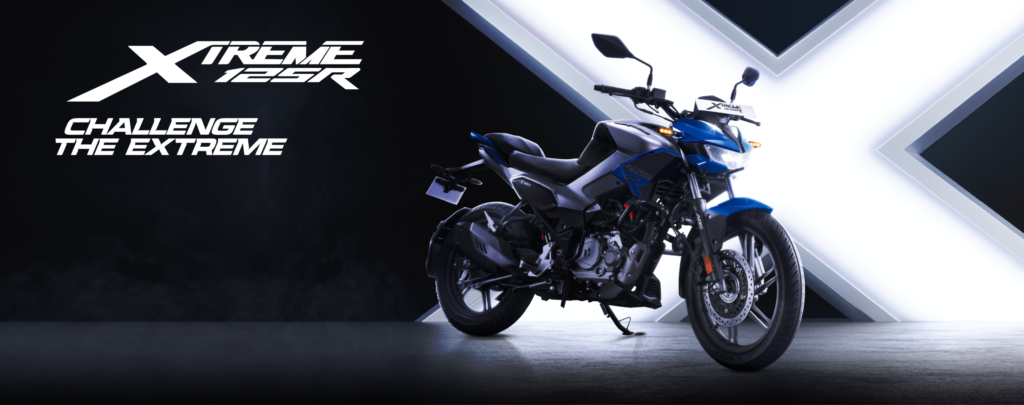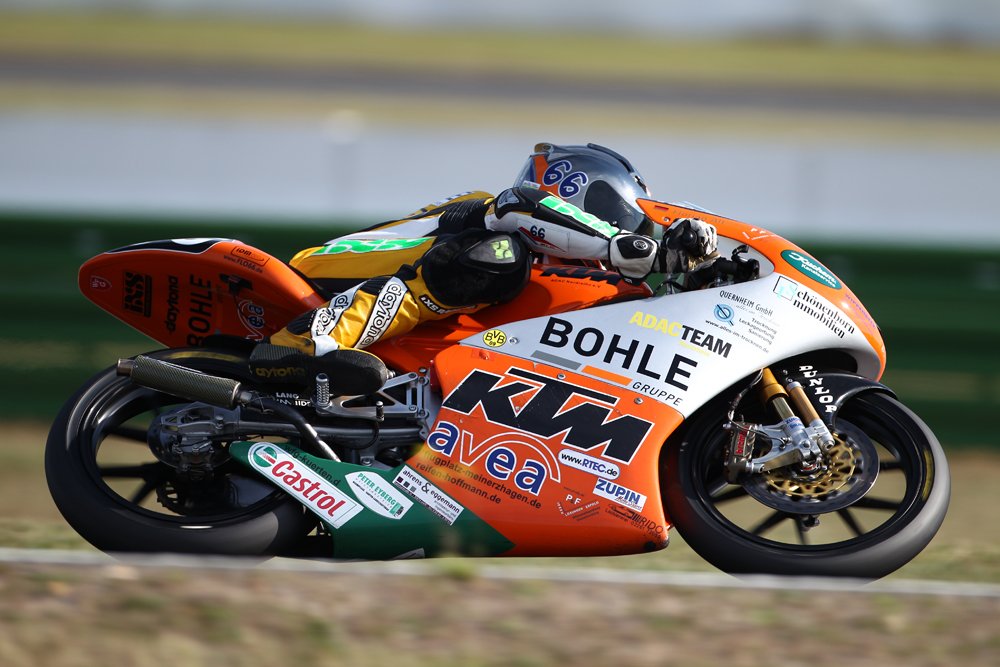
Wouldn’t it be nice if bikes only came in one size? In reality, buying the wrong size motorcycle can make for a very awkward riding experience, so finding that perfect size is crucial if you plan to have a good time on the road.
can be. You’ll be spending the next several years sitting on your brand new baby, and getting the sizing right will ensure that it’s a match made in heaven.
In this article we’ll discuss the key factors that go into determining your correct bike, so you can ride comfy and carefree.
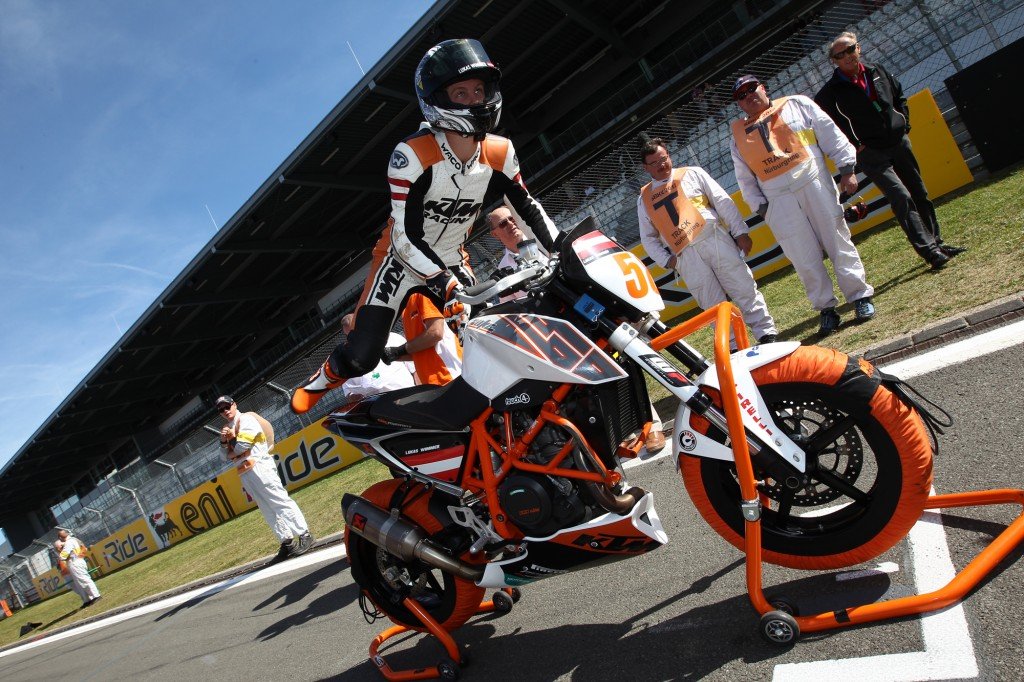
WHY SIZING MATTERS FOR MOTORCYCLES
So why does any of this matter in the first place? Unlike driving a car, you and your bike are one cohesive unit. As you make turns, your entire body goes into the movement to help manoeuvre the bike. If your balancing is off and you’re having a hard time reaching for the controls, it’s just not going to work.
Getting the sizing wrong on your bike isn’t just awkward, it can be straight up dangerous. If you’re working that much harder just to reach for the controls, your reaction times are going to take a hit. Taking that extra second to react at the wrong moment could end up having some major consequences.
Having a bike that’s too tall or too heavy can lead to problems as well. For starters, it can make manoeuvring even at low speeds a real pain in the ass. If a bike is too tall and you can’t put your feet flat on the ground then you’ll also run into problems, especially at traffic lights and stop-start traffic when it’s ideal to rest your foot directly on the ground.
So if you want to avoid these problems and keep the hassle to a minimum, let’s run through the ways to find that perfect size.
ASSESSING RIDER HEIGHT AND INSEAM MEASUREMENT
Now we’re getting to the nitty gritty of things. One of the first things you can do is to check your height against the manufacturer’s recommendations, but to be honest this isn’t a 100% reliable way to go about it. It’s a decent way of giving you a rough idea, but don’t take the retailer’s measurements too literally.
Inseam measurement is another way of checking your height. This refers to the length between your crotch and the floor. Again, this is a useful way of getting a rough idea of whether a bike is the appropriate size, but don’t take it to be entirely accurate.
The best way of checking your height on a motorcycle is to simply step onto the thing. Unfortunately there is no better alternative. No amount of fancy measurements and metrics will give you a better idea of height, no matter how accurate.
So, what do you check for once you’re actually on the bike? If you’re too short for the bike, you might find yourself struggling to reach the handlebars, which can make things pretty uncomfortable and awkward. If you’re too tall for a bike, you’ll feel cramped and have to hunch over while riding it. Again, not ideal.
The sweet spot is when you can comfortably reach the controls without feeling like you need to contort your body. You’ll know a bike is the right height when moving for the controls feels almost effortless and natural.
UNDERSTANDING DIFFERENT MOTORCYCLE TYPES
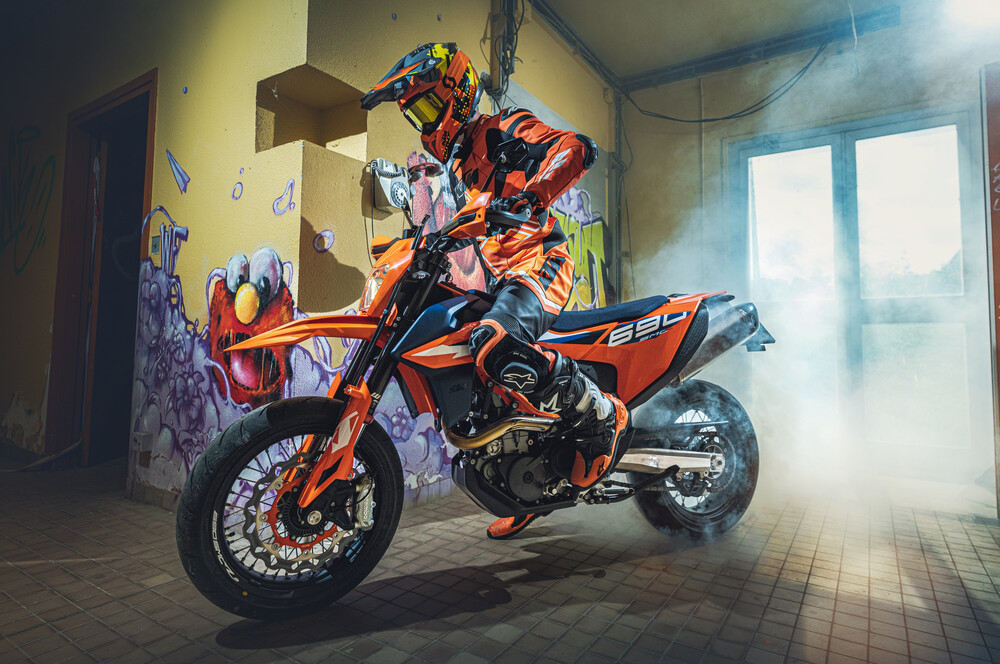
There are several different motorcycle types, and the one you choose will have an effect on the bike’s weight and height.
Touring Bikes: Touring bikes are made to be comfortable over long
rides. They’re made with low seats, but they’re also fairly heavy and bring a lot of weight to the party. A touring motorcycle is usually not recommended for beginner riders.
Cruisers: Cruiser bikes have very low seats and a weight range that’s right about in the middle – not too heavy, not too light. They’re pretty versatile bikes, but the leaned-back sitting position might pose a challenge for people with short arms to reach the controls.
Sport Bikes: Sport bikes have high seats to give them better cornering, which could be a problem for shorter riders. They do have an aggressive, leaned-forward riding position though, which makes accessing the controls fairly easy. Sport bikes are some of the lightest bikes you can find, but they’re not beginner friendly.
Adventure Bikes/Dirt Bikes: If you love to rip it up on a dirt bike or adventure bike then expect a fairly high seat, which might be an issue for short riders. Adventure bikes usually light and springy, which makes sense considering that they’re made to take on difficult terrain.
ASSESSING ENGINE SIZES AND POWER OUTPUT
Engine size will play a big factor in how big the bike is, and therefore how heavy it is. Simply put, the bigger the bike’s engine capacity, the bigger the bike. So a bike that’s 250cc will be way lighter than a 600cc monstrosity. So how do you know what to pick?
As a general rule, newer riders should be choosing a bike in the 250cc to 300cc range. They’re less powerful and much easier to handle, which is perfect for people who are still getting used to things.
On the other hand, a heavier rider might find that a 250cc bike feels cramped and uncomfortable. In that case, something with a little more power would be appropriate so support the rider’s weight. In the end, there’s no substitute for how comfortable you actually feel. Step on the bike and listen to your body.
Bike size will also determine how much carrying capacity the motorcycle has. If you plan on taking long riding trips that require luggage, or riding with a passenger, then weight limit will become an issue. The weight limit for most bikes is about 160-200kg.
One way of determining a bike’s carrying capacity is to subtract the bike’s weight from its gross vehicle weight rating. Whatever remains is the weight that needs to fit you, your passenger and/or cargo.
EVALUATING WEIGHT AND BALANCE
On the day you decide to try out a brand new bike, you should weigh yourself. Seriously, you’ll actually need to weight yourself. It’s important to know your own weight when deciding on the right bike (see the section above). Don’t forget if the bike will be carrying more than just you. Whatever you bring along for the ride will add to the weight as well, including saddlebags and passengers.
If you open a bike manual it will list the bike’s weight. Simple, right? Wrong! The weight listed in the manual is what’s known as the dry weight. The dry weight doesn’t include things like fuel and motor oil, which the bike needs to operate. The wet weight is what we actually want. As a rule, adding 50 pounds/22kgs to the dry weight will give you a reasonably accurate wet weight.
Next, the bike needs to feel like it balances when you sit on it. Sit on the bike and see how things feel. Your feet should comfortably reach the ground with a flat foot so you can easily stabilize the bike when necessary. Your arms should comfortably reach the handlebars without feeling like you’re overextending.
Try putting your feet on the foot pegs and foot controls as well. Your feet should comfortably reach them without feeling awkward.
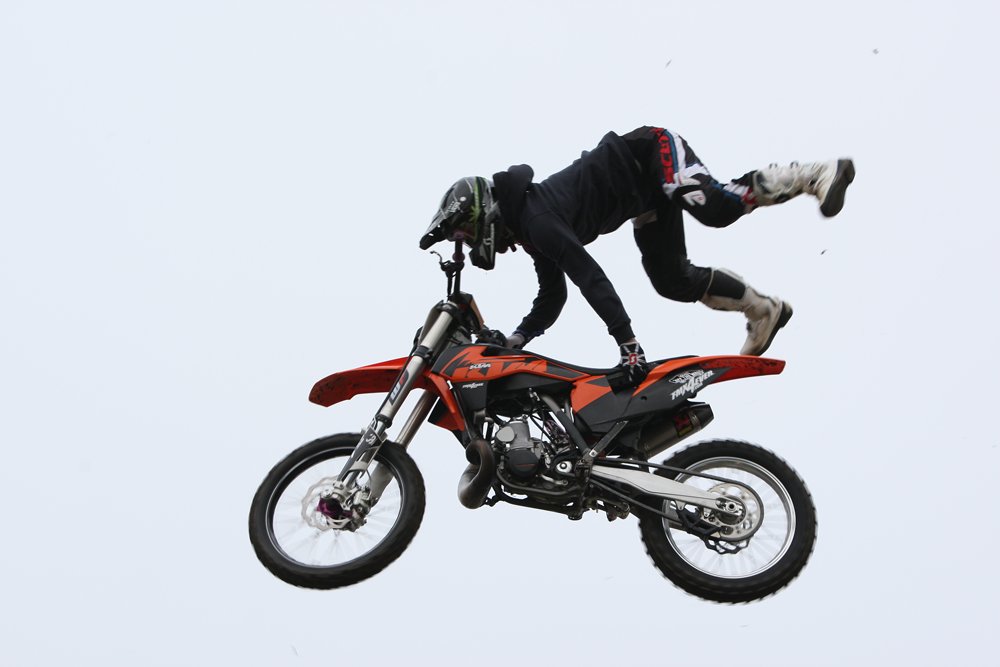
CONSIDERING RIDER EXPERIENCE AND CONFIDENCE
Since you’re reading this article, it’s safe to say that you’re reasonably new to riding. One of most common mistakes that new riders make is to pick the coolest looking bike they see, only to find out they can’t handle it. Yes, that KTM 1390 Super Duke probably looks sick, but is it really a beginner’s bike?
The thing about a big bike is that it can be really tough to handle. Whether it’s the sheer weight of the thing, the engine power or probably both, they’re not designed for beginners. If you want to build up your skills and confidence, we recommend buying something in the 250-300cc range or even below. Odds are that you’ll own many bikes in your lifetime anyway, so why rush things?
‘But bikes are expensive‘ you might be saying. ‘Am I really supposed to throw all this money into a crappy beginner bike?’ Yes, we all need to start somewhere, and that means investing in a start-up bike.
EVALUATING SUSPENSION AND HANDLING
Suspension is a pretty important component for overall comfort. A bike’s suspension is pretty much a set of shock absorbers and springs that supports a rider’s weight and handles bumpy terrain. These components are what keep the bike feeling smooth as you ride, and helps you feel in control.
Suspension is important for comfort in any size bike, but it’s going to be especially important for something like an adventure bike. In any case, the bike should feel smooth and stable when you test ride it. Smooth handling is a must if you want to sit comfortably on the bike for long hours.
Think of the bike as an extension of yourself, because it basically is! Your movements should feel seamlessly connected to the motorcycle at all times. When you zig, the bike should not zag. Again, the only way to really test this is to actually sit on the machine.
EXAMINING SEAT HEIGHT AND FOOT PLACEMENT
Seat height is pretty important. Motorcycle manufacturers list their seat heights on their websites, usually under the ‘specs’ option. The way to measure yourself for a motorcycle seat is to get your inseam measurement, which is the length from your crotch to the floor. These measurements are handy to give you a general idea of heights for motorcycle models, but there’s no substitute for actually sitting on one.
Keep in mind that some bikes have adjustable seats, but not all of them. Now this shouldn’t be taken as an invitation to buy a bike with a wildly unsuitable seat, but it’s an option for further down the road if the seat just needs a little tweak.
When testing a seat’s height, aim for both of your feet to comfortably reach the ground with a flat foot. If you feel like your feet are overextending to reach the ground, the seat is too high. On the other hand if the seat is too low, your knees might be bent at an uncomfortably low angle, which can affect your control of the bike.
Of course, there’s always the option of buying an aftermarket seat, which is a replacement seat that’s different from the one that came with the bike. This can be a complicated road and we don’t recommend going down it. Seeing as you’re a new rider, try not to tinker with things too much unless you’ve got a buddy helping you who knows what they’re doing.
RESEARCHING MANUFACTURER RECOMMENDATIONS
Most manufacturers design a motorcycle with a specific type of rider in mind. When reading about any bike’s specifications and features, they will most likely mention the target audience that it was made for. Things like a rider’s height, experience and riding habits will determine where you fall in the riding spectrum.
So look far and widen your search for that perfect motorcycle.
TEST RIDING AND TRYING OUT DIFFERENT BIKES
As a new rider, it’s easy to fall in love with the first bike you ride. You’re probably itching to just get out there already, but try playing it cool instead. Motorcycles aren’t cheap, after all. Play the field and ride a few bikes so you’ve got a point of comparison when you’re browsing.
The main things to look out for in a test ride are how comfortable and natural the bike feels, how well it handles, the engine performance, braking/acceleration and overall enjoyment. Ask yourself if you can imagine riding this bike for the next several years.
There might be a case where you step on a bike and just instantly know it’s the one. Great! In these cases, try to think with your head and not with your heart. Take a few days to think about it then come back. It’s not going anywhere.
SEEKING PROFESSIONAL ADVICE AND GUIDANCE
You’ve taken a good first step by choosing to research before you shop, but there’s something to be said about asking experienced riders for advice. They’ve been in your shoes and might just drop a few pearls of wisdom your way. So if you have any riding buddies or know any serious riders, hit them up for some advice.
Motorcycle forums and clubs are a great way of connecting with riders if you don’t happen to know any yet. The riding community is (mostly) super friendly and always welcoming to new members in the ranks. You’re sure to pick up some sound advice from like-minded individuals who know the ins and outs of their craft.
And of course, most experienced riders will have a horror story about buying a second hand bike, so run it by a friend if you plan to go down the used bike road.
FINALIZING THE PERFECT FIT
Finding the right motorcycle can feel like a chore, but you won’t regret taking the extra time to find your perfect vehicle. The hours of comfort that you’ll get to enjoy will more than make up for the extra hassle.
So remember to be patient, follow the advice mentioned here and anywhere else your research takes you. We know that you’re keen to ride right now, but trust us, it’s worth the wait once you finally get your hands on that sweet ride.
FREQUENTLY ASKED QUESTIONS
WHAT TYPES OF MOTORCYCLES ARE SUITABLE FOR BEGINNERS, AND HOW DO THEIR SIZES DIFFER?
So exactly what types of motorcycles are suitable for beginners, and how do their sizes differ?
Getting a beginner-friendly bike is crucial if you want to start your riding career on the right track. Lots of new riders make the mistake of picking the shiniest toy they find, which is almost always more than they can handle.
Standard/naked bikes and cruisers are some of the best bikes on the market for newer riders. They’re not overly large and are relatively light on horsepower, so they’re much easier to handle than a touring bike or a sports bike.
Scooters are a great choice if you live in an urban environment and don’t plan on pushing the limit too much. They’re small bikes and some of the easiest to handle.
Dual-sport/adventure bikes are perfect if you want to incorporate both on and off-road riding into your schedule.
HOW DOES ENGINE SIZE AFFECT THE RIDING EXPERIENCE FOR BEGINNERS, AND HOW DO I CHOOSE THE RIGHT ENGINE SIZE?
So how exactly does engine size affect the riding experience for beginners, and how do you choose the right engine size?
Engine size makes a big difference on a motorcycle. To put it as simply as possible, the bigger the engine the more power the bike has. A 250cc engine, for example, is going to have way less power than a 600cc monster.
The thing new riders have to understand about this increased power and performance is that it can be really hard to control. That’s why it’s always recommended that beginner riders start off with something smaller and more manageable. Lower powered bikes are perfect when you’re still getting the hang of things. The bigger bikes can come later once you’ve got some experience under your belt.
IS THERE A WEIGHT LIMIT FOR MOTORCYCLES, AND HOW CAN I CALCULATE THE CARRYING CAPACITY FOR A SPECIFIC MODEL?
Motorcycles don’t actually have a strict weight limit in the same way that cars do. Generally speaking, the weight limit for most bikes is about 160-200kg.
If you want to know the capacity for a specific model, check the gross vehicle weight rating. All bikes should have one. Just keep in mind that this number also includes the weight of the bike itself, so remember to subtract that when making your calculations.
